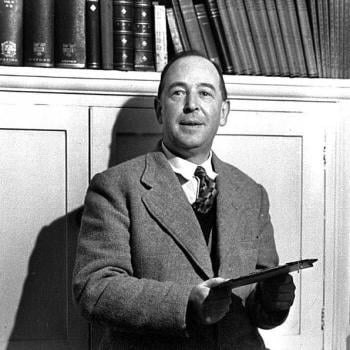Some historians, on the basis of manuscript and carbon-dating evidence, claim to have identified a particular chalice as the Holy Grail, the cup used by Christ at the Last Supper. The gold and jewel-encrusted vessel is built around a more humble cup that has been traced to the Middle East in the years between 200 B.C. and 100 A.D.
If the Grail has been recovered, according to legend, the spiritual wasteland of our age will come back to life. But I say that if you want a cup that holds Christ’s blood and that will bring life in the spiritual wasteland, all you have to do is go to a church that offers the Sacrament of the Altar and you will find it.
See a picture of the alleged Grail and sample two news stories about it after the jump.
From Spanish historians claim to have found Holy Grail – European News | Latest News from Across Europe | The Irish Times – Fri, Mar 28, 2014:
It has been the subject of theological and historical argument for centuries, but Spanish historians now claim to have tracked down the Holy Chalice, the cup from which Christ was supposed to have drunk during his last supper. They believe the 2,000-year-old vessel is in a church in León, in northern Spain.
Margarita Torres and José Ortega del Río have spent three years researching the history of the chalice and, on Wednesday, presented in León a co-written book, Los Reyes del Grial (The Kings of the Grail), containing their findings.
The onyx chalice itself, they explain, is contained within another, antique cup known as the Chalice of Doña Urruca, which sits in León’s basilica of Saint Isidore. The historians say it has been there since the 11th century.
“This is a very important discovery because it helps solve a big puzzle,” Ms Torres told The Irish Times . “We believe this could be start of a wonderful stage of research.”
She said the duo had initially been researching the history of some Islamic remains in the Saint Isidore basilica. However, their discovery of two medieval Egyptian documents which mentioned the chalice of Christ caused them to change course.
Those parchments told of how Muslims took the sacred cup from the Christian community in Jerusalem to Cairo. It was then given to an emir in Denia, on Spain’s Mediterranean coast, in return for help he gave to Egyptians who were suffering a famine.
During medieval times, much of Spain was under Muslim rule, but the cup subsequently came into the possession of Christian King Ferdinand I of Castile.
The historians’ research has been backed up by a scientific dating process which estimates that the cup in question was made between 200 BC and 100 AD.
Mr Torres and Mr del Río admit that the first 400 years of the chalice’s history remain something of a mystery and they cannot say for sure whether this chalice ever actually touched Christ’s lips.
However, they insist there is no doubt that this is the cup that the early Christians revered as the chalice used at the last supper.
“The only chalice that could be considered the chalice of Christ is that which made the journey to Cairo and then from Cairo to León – and that is this chalice,” said Ms Torres, who teaches medieval history at the University of León.
See also this:
Made of agate, gold and onyx and encrusted with precious stones, the object in León is formed by two goblets joined together, with one turned up, the other down.
It has been known until now as the goblet of the Infanta Doña Urraca, daughter of Fernando I, King of León from 1037 to 1065.
The two historians — León University medieval history lecturer Margarita Torres and art historian José Manuel Ortega del Rio — identified it as the grail in their book, “Kings of the Grail,” published last week.
They said two Egyptian parchments they found in 2011 at Cairo’s University of al-Azhar set them on a three-year investigation.
Their studies led them to identify the upper part of the princess’s goblet, made of agate and missing a fragment as described in the parchments, as the grail — one of the most prized relics in Christianity.











